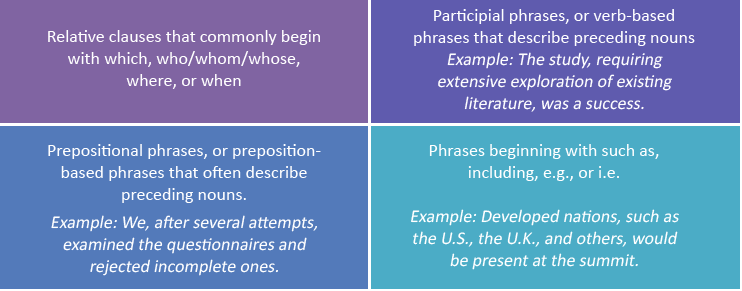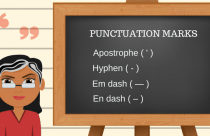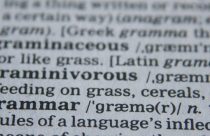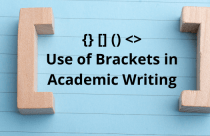How to Effectively Use Commas in Academic Writing (Part 2)

“I was working on the proof of one of my poems all the morning, and took out a comma. In the afternoon I put it back again.”
– Oscar Wilde
The previous post consisted of a collation of the basic rules of comma usage. Continuing in that vein, we shall discuss the usage of commas with parenthetical elements.
The complexity of comma usage stems from the fact that apart from several stringent rules, comma usage can also be contextual. However, such ambiguity can be resolved with a little focus and in-depth understanding of the content being represented.
Parenthetical Elements
Parenthetical elements contain information that is not essential to the independent meaning of a sentence, that is, if such information is omitted, the sentence will still make sense on its own. Parenthetical elements comprise the following: an example, an explanation or clarification, or an aside.
Clauses that provide additional information essential to the comprehensive meaning of the sentence are known as restrictive clauses. Such clauses are usually introduced by “that” in American English.
Clauses that provide additional information that can be eliminated without altering the meaning of the sentence are known as non-restrictive clauses. Such clauses are introduced by “which” in American English. These clauses are either set-off by commas on either side when present in the middle of a sentence or preceded by a comma if present at the concluding part of a sentence.

British English is less stringent regarding comma usage with parenthetical information—either which or that can be used to introduce both restrictive and non-restrictive elements. However, the relaying of accurate information would thus depend on the writers’ correct interpretation and subsequent presentation of the content.
Parenthetical elements may comprise the following types of clauses and phrases (provided the information being presented is non-restrictive).

Source: https://www.aje.com/en/arc/editing-tip-parenthetical-elements/
Examples
1. An instance where incorrect comma usage may lead to conveying incorrect or ambiguous information is represented in the following sentence.
The narrator describes Jude’s room, where Jude is drying Sue’s clothes beside her as she sleeps upright in a chair, wearing his suit.
Here, the incorrect set-off is conveying an implausible information that the narrator is describing Jude’s room wearing his suit (when non-essential parenthetical elements are removed, the sentence should still stand on its own).
2. Again, let’s consider the following sentence.
E.B Jones examines Communism’s main characteristics, and its purpose.
While it may seem like “…and its purpose” is additional information and an afterthought, the accurate interpretation and representation of the sentence should be in the following manner.
E.B Jones examines Communism’s main characteristics and its purpose.
This means that E.B Jones is examining both the characteristics and the purpose of Communism, that is, it is a list comprising two items.
For this reason, it is important to understand the content as well as the intent in-depth before representing it in writing. Express and edit responsibly!









